Distributed Benefit
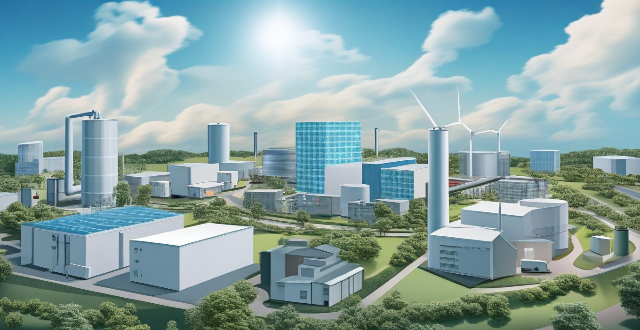
What are the benefits of using a distributed energy system ?
Distributed energy systems (DES) have become increasingly popular due to their numerous benefits. These systems can include solar panels, wind turbines, micro-hydro plants, and other renewable energy sources. The key benefits of using a distributed energy system are increased energy efficiency, lower energy costs, improved reliability and resilience, environmental sustainability, encouragement of local economy and job creation, promotion of energy independence and security, and flexibility and scalability. Adopting a distributed energy system brings numerous benefits ranging from increased efficiency and cost savings to improved reliability, environmental sustainability, economic development, and energy security.

What role do renewable energy sources play in distributed energy systems ?
Renewable energy sources are crucial for distributed energy systems due to their clean, sustainable nature and local generation capabilities. They reduce carbon emissions, enhance energy security, promote local economic development, improve energy efficiency, and enable innovation in these systems.

How do distributed energy systems impact the environment ?
Distributed energy systems, characterized by their clean and efficient nature, play a crucial role in modern energy systems. These systems primarily utilize renewable energy sources such as solar, wind, and biomass, and are typically located near energy consumers. This not only reduces transmission losses but also enhances the overall efficiency of energy utilization. The impact of distributed energy systems on the environment can be broadly categorized into the following key points: 1. **Reducing Greenhouse Gas Emissions** - **Decrease Fossil Fuel Dependence**: Distributed energy systems often use renewable energy sources, reducing the need for fossil fuels and thereby decreasing greenhouse gas emissions associated with traditional power generation. - **Promote Energy Diversification**: By combining various renewable sources, these systems help diversify energy production, further mitigating the environmental impact of energy reliance on any single source. 2. **Enhancing Energy Utilization Efficiency** - **Decentralized Production**: Producing energy closer to where it is consumed reduces transmission losses that occur in centralized power systems. - **Combined Heat Power**: Some distributed systems employ combined heat and power (CHP) technology, which can achieve higher energy efficiency rates, up to 80%-90%, compared to traditional methods. 3. **Mitigating Environmental Pollution** - **Reduction in Exhaust Emissions**: Renewable distributed energy sources like solar and wind inherently produce no emissions, significantly reducing air pollution compared to fossil fuel combustion. - **Minimizing Water Pollution**: Unlike some large-scale hydroelectric projects, distributed renewable sources have a minimal impact on water ecosystems and do not introduce pollutants into water bodies. 4. **Promoting Sustainable Development** - **Sustainable Resource Cycles**: Distributed systems often incorporate local energy cycles, promoting sustainable resource use and management at a community level. - **Eco-friendly Infrastructure**: The infrastructure required for distributed energy systems, such as solar panels and wind turbines, has a relatively lower environmental footprint compared to traditional power plants. 5. **Improving Ecological Biodiversity** - **Land Use Impact**: Distributed energy projects generally require less land compared to large-scale power plants, thus having a reduced impact on habitats and biodiversity. - **Habitat Preservation**: The decentralized nature of these systems allows for easier integration into existing environments without significantly disrupting ecological balance. 6. **Increasing Systemic Resilience** - **Disaster Response**: Decentralized energy systems can continue to operate even when the main grid fails, enhancing community resilience during natural disasters or other crises. - **Grid Stability**: Distributed energy resources can help stabilize the electrical grid by providing localized load balancing and peak shaving functions. 7. **Supporting Policy and Regulations** - **Policy Driving Forces**: Many governments encourage the development of distributed energy through favorable policies, aiming to reduce carbon emissions and promote sustainable development. - **Regulatory Frameworks**: Comprehensive regulatory frameworks ensure that the development of distributed energy aligns with environmental protection and sustainability goals. Additionally, while distributed energy systems offer numerous environmental benefits, careful planning and implementation are necessary to maximize their positive impacts. For instance, the extraction and processing of materials for solar panels and wind turbines can have environmental costs, necessitating strict oversight and environmentally friendly practices. Moreover, integrating distributed energy effectively into existing energy frameworks requires advanced grid management technologies and innovative market mechanisms.

How do distributed energy systems contribute to energy efficiency and sustainability ?
Distributed energy systems (DES) play a significant role in improving energy efficiency and sustainability. DES refers to a comprehensive energy utilization system located near the end-users, which can operate independently or in conjunction with the grid. It encompasses various technologies such as combined heat and power (CHP), renewable energy, energy storage, and fuel cells. Here is a detailed exploration of how distributed energy systems contribute to energy efficiency and sustainability: 1. **High Energy Efficiency** - **Combined Heat and Power (CHP)**: CHP systems generate both electricity and heat simultaneously, providing an overall efficiency of up to 80%-90%. This is considerably higher than traditional centralized power plants, which typically have an efficiency of around 40% for advanced coal-fired power plants. - **Energy Cascade Utilization**: Distributed energy systems utilize energy cascading, where the byproducts of one process are used as inputs for another. For example, waste heat from electricity generation is used for heating or cooling, maximizing energy utilization. - **Reduced Transmission Losses**: Due to their proximity to consumers, DES reduces the need for long-distance transmission of electricity, thereby minimizing transmission losses compared to centralized power systems. 2. **Environmental Protection** - **Low Emissions**: Distributed energy systems often use clean energy sources like natural gas, solar, and wind, which have lower emissions compared to traditional coal or oil combustion. - **Renewable Energy Integration**: Distributed energy systems can easily integrate renewable energy sources like solar panels and wind turbines, promoting the use of sustainable energy. - **Waste Reduction**: By using waste heat and integrating multiple forms of energy production, DES helps reduce energy waste and its associated environmental impact. 3. **Economic Benefits** - **Cost Savings**: Distributed energy systems can reduce energy costs by decreasing transmission and distribution expenses. They also provide more stable energy prices compared to fluctuating grid rates. - **Infrastructure Investment Reduction**: Since DES requires less infrastructure compared to large-scale power plants and transmission networks, it can lead to significant cost savings in infrastructure investment. - **Market Potential**: The development of DES has opened up new markets and business opportunities, especially in the sale and maintenance of distributed energy equipment. 4. **Enhanced Reliability and Resilience** - **Decentralized Architecture**: The decentralized nature of DES means that if one system fails, others can still operate, ensuring continuous energy supply. - **Storm and Disaster Resilience**: During large-scale disasters or extreme weather events, DES can serve as a crucial energy source when centralized power systems fail. 5. **Promotion of Smart Grid Development** - **Integration with Smart Grids**: Distributed energy systems can be integrated with smart grids, enabling two-way flows of electricity and information, which enhances overall grid efficiency and responsiveness. - **Demand Response Management**: DES allows for better demand response management, where consumption can be adjusted based on real-time supply and demand conditions, further enhancing energy efficiency. Additionally, there are several challenges and considerations for the widespread adoption of distributed energy systems: - **Technical Challenges**: The integration of multiple energy sources requires advanced technical expertise and sophisticated control systems. - **Policy Support**: While policies increasingly support DES, more comprehensive regulations and incentives are needed to encourage wider adoption. - **Economic Viability**: Although DES offers economic benefits, the initial investment can be high, which may limit access for some users. In summary, distributed energy systems contribute significantly to energy efficiency and sustainability through high energy utilization efficiency, environmental protection, economic benefits, enhanced reliability and resilience, and promotion of smart grid development. Despite certain challenges, the advantages of DES make it a critical component of future energy strategies.
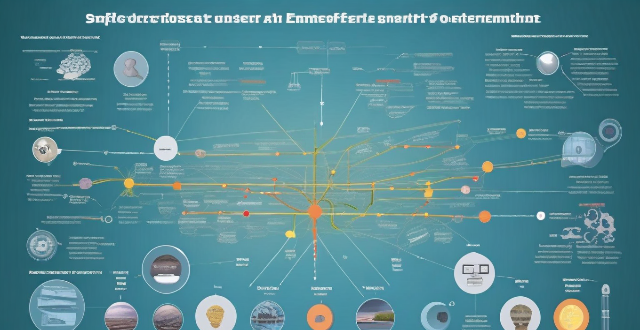
What are the costs associated with implementing a distributed energy system ?
This article discusses the different types of costs associated with implementing a distributed energy system, including initial investment costs, operational costs, and energy costs. It also emphasizes the importance of carefully considering these costs before making any decisions about whether or not to invest in such a system.

How can we ensure that climate adaptation strategies are equitable and benefit all members of society ?
Ensuring equitable climate adaptation strategies is crucial to protect vulnerable groups and future generations from disproportionate impacts of climate change. Key considerations include recognizing inequalities, involving affected communities in decision-making, fairly distributing costs and benefits, building capacity through education and skills development, mainstreaming equity into policies, and focusing on long-term sustainability.
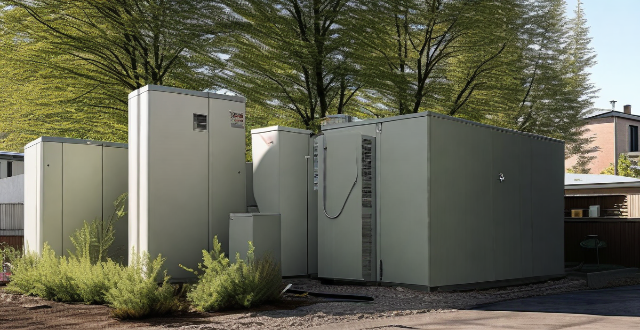
What is a distributed energy system ?
Distributed energy systems (DES) are integrated systems that generate, store, and manage energy near the point of consumption. They typically include renewable energy sources, energy storage devices, and control systems. The primary goal is to optimize energy production and consumption while minimizing environmental impact and enhancing energy security. Key features of DES include decentralized generation, renewable energy sources, energy storage, intelligent control systems, flexibility, and scalability. Benefits of DES include increased energy efficiency, improved reliability, reduced environmental impact, enhanced energy independence, and cost savings. Examples of DES include residential solar PV systems, commercial buildings with cogeneration, microgrids, and community energy projects.

How does a distributed energy system work ?
A distributed energy system (DES) is a decentralized approach to power generation and distribution that utilizes renewable energy sources, energy storage devices, and smart grid technologies. The system works by generating electricity locally from renewable sources, storing excess energy for later use, and distributing power efficiently within a local area. This setup enhances efficiency, reliability, and sustainability while potentially reducing costs. DESs offer flexibility and adaptability to changing energy needs and technological advancements, positioning them as a crucial element in the future of energy infrastructure.
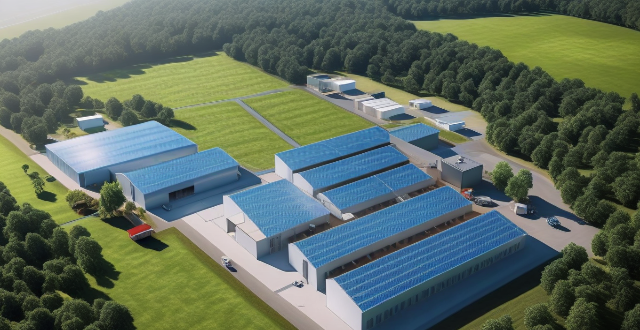
What are some examples of distributed energy systems ?
Distributed energy systems (DES) are small-scale power generation units located close to end-users, offering benefits like increased energy efficiency and reduced environmental impact. Examples include solar PV systems, wind turbines, fuel cells, and microgrids. These systems can operate independently or connect to the main power grid. Solar PV systems convert sunlight into electricity using silicon cells, while wind turbines harness wind's kinetic energy. Fuel cells generate electricity through a chemical reaction of hydrogen and oxygen. Microgrids are localized groups of interconnected loads and distributed energy resources that can operate independently from the main power grid. DES contribute to a more sustainable future by improving energy efficiency, reducing environmental impact, and enhancing electricity supply reliability.
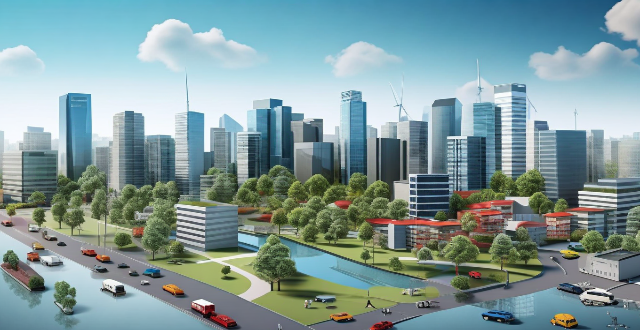
How can developing countries benefit from implementing renewable energy solutions ?
Renewable energy solutions offer significant benefits for developing countries, including reduced energy costs, job creation, improved health and environmental quality, increased energy security, and climate change mitigation. By investing in renewable energy infrastructure, these countries can build more sustainable and prosperous futures for themselves and their citizens.

How do developing countries benefit from the Clean Development Mechanism (CDM) ?
How Developing Countries Benefit from the Clean Development Mechanism (CDM) The Clean Development Mechanism (CDM) of the Kyoto Protocol brings numerous benefits to developing countries, including technology transfer, sustainable development, and environmental advantages. It also enhances their capacity building, global engagement, and influences policy-making towards sustainability. Overall, the CDM aids in reducing emissions while fostering economic growth and environmental conservation.

What role do sponsors play in sports charity events, and how do they benefit from it ?
The role of sponsors in sports charity events is crucial for the success of these events. Sponsors provide financial support, enhance brand awareness, promote corporate social responsibility, and create networking opportunities. In return, they benefit from increased exposure and brand recognition, building relationships with key stakeholders, potential tax benefits, and measurable results. Overall, sponsoring sports charity events allows companies to contribute to a worthy cause while positioning themselves as responsible corporate citizens committed to making a positive impact on society.

What is the difference between a will and a trust ?
The text discusses the differences between wills and trusts in estate planning, highlighting key areas where they diverge. A will is a legal document outlining distribution wishes for assets after death, requiring witnesses and taking effect posthumously. It allows control over assets during one's lifetime and goes through probate, a public process. Wills are flexible and generally less costly to create but offer no tax benefits. Conversely, a trust involves transferring property to a trustee for beneficiaries, with creation and effectiveness varying. Trusts can avoid probate, offering privacy and potential tax benefits but at a higher initial cost and less flexibility, especially if irrevocable. Choosing between them depends on individual needs and preferences.

In what ways can energy storage solutions improve grid stability and reliability ?
Energy storage solutions play a crucial role in enhancing grid stability and reliability. They contribute to balancing supply and demand, providing ancillary services, integrating renewables, improving resilience, optimizing economic efficiency, facilitating distributed generation, and supporting transmission and distribution systems. Energy storage systems can absorb excess energy during low demand periods and release it during peak times, helping to level the load on the grid. They also provide frequency regulation and voltage support, smoothing out the variability of renewable sources like wind and solar. Energy storage enhances resilience by providing blackstart capability and islanding, allowing parts of the grid to be isolated and continue supplying power in case of major faults. It optimizes economic efficiency by enabling arbitrage and deferring costly grid upgrades. Energy storage facilitates distributed generation by allowing consumers with distributed generation to store energy during off-peak hours and use it during peak time periods, reducing their electricity bills. Overall, energy storage solutions are becoming increasingly vital for modernizing and strengthening our electrical grids.

What are some potential challenges and drawbacks of distributed energy systems ?
Distributed energy systems (DES) offer benefits such as increased energy independence and reduced carbon emissions, but they also present several challenges. These include interconnection issues with the power grid, reliability concerns due to weather dependency and storage limitations, high upfront costs, complex permitting processes, operation and maintenance expenses, environmental impacts from resource extraction and waste management, potential job losses in traditional energy sectors, and shifts in energy market dynamics. Addressing these challenges requires technological innovation, policy development, and consumer education.

How does the issuance of green bonds benefit environmental projects ?
Green bonds are financial instruments designed to fund environmentally friendly projects, offering benefits such as increased funding opportunities, improved project visibility, long-term financing, risk mitigation, market growth and innovation, policy and regulatory support, and community and environmental impact. These bonds not only benefit the specific environmental projects they aim to fund but also contribute to a broader shift towards sustainable finance and environmental stewardship.

How can I install a distributed energy system in my home or business ?
Installing a Distributed Energy System (DES) in your home or business can significantly reduce reliance on the grid and provide financial savings. The process involves assessing energy needs, site evaluation, financial analysis, system design, permitting, installation, and maintenance. Choosing the right technology, sizing the system appropriately, and selecting quality equipment with certified installers are crucial steps. Permitting includes checking local regulations and coordinating with the utility for interconnection. Installation involves mounting equipment, electrical connections, and system checks. Maintenance ensures optimal performance through cleaning, inspections, and performance tracking. This investment requires careful planning but offers substantial rewards.

How are vaccines distributed globally ?
The global distribution of vaccines is a complex process involving various stakeholders, including governments, international organizations, pharmaceutical companies, and healthcare providers. The article discusses the different aspects of vaccine distribution worldwide, highlighting the challenges and opportunities in this critical field. It covers topics such as manufacturing and production, regulatory approval and licensing, international collaboration and partnerships, funding and financing mechanisms, logistics and delivery, administration and coverage, and more. By addressing these challenges proactively and leveraging available opportunities, we can work towards achieving equitable access to vaccines for all populations worldwide.

How does space exploration benefit humanity ?
The benefits of space exploration for humanity include technological advancements, economic growth through job creation and commercial opportunities, global collaboration fostering peace, scientific discoveries about our universe, inspiration and education for future generations, preserving Earth by monitoring environmental changes, and national security measures. These benefits touch every aspect of human life, making space exploration a significant investment in our collective future.

Can rural areas benefit from 5G network deployment ?
The advent of 5G technology promises to revolutionize the way we live, work, and communicate. With its faster speeds, lower latency, and increased capacity, 5G has the potential to transform various sectors, including healthcare, education, transportation, and more. However, the question remains: can rural areas also benefit from 5G network deployment? Benefits of 5G in Rural Areas: - Improved Connectivity: Faster Internet Speeds and Reduced Latency - Enhanced Quality of Service: Better Coverage and Increased Capacity - Economic Development: Job Creation and Business Opportunities - Social Benefits: Education and Healthcare Challenges and Considerations: - Infrastructure Costs: High Initial Investment and Maintenance Expenses - Geographic Barriers: Topography and Population Density - Regulatory Hurdles: Spectrum Allocation and Compatibility Issues Conclusion: While there are certainly challenges associated with deploying 5G networks in rural areas, the potential benefits are significant. Improved connectivity, enhanced quality of service, economic development, and social benefits all stand to gain from the introduction of 5G technology. As long as these challenges are addressed through careful planning, collaboration between stakeholders, and appropriate investment, rural areas can indeed benefit from 5G network deployment.

Can small businesses benefit from Cross-Border Payment ?
Cross-border payments are increasingly vital in the global economy, enabling businesses to tap into new markets. Small businesses can benefit from this trend by expanding market access, increasing revenue potential, improving customer experience, reducing costs, and gaining a competitive advantage. As technology continues to evolve, small businesses should consider taking advantage of cross-border payments to grow and succeed on a global scale.

How do ecological protection areas affect local communities and their livelihoods ?
Ecological protection areas (EPAs) are vital for preserving ecosystems, but their establishment impacts local communities significantly. Positive effects include conservation of resources, tourism opportunities, and environmental education. Negative impacts encompass restrictions on resource use, changes in livelihood patterns, and social tensions. To mitigate these challenges, strategies like collaborative planning, fair benefits sharing, capacity building, and a strong legal framework are essential. By fostering partnerships with local communities, EPAs can ensure mutual benefits for both the environment and the people who depend on it.

What industries benefit most from carbon credit systems ?
Carbon credit systems provide financial and competitive advantages to industries that reduce greenhouse gas emissions. Renewable energy producers, energy-efficient manufacturers, carbon capture and storage tech companies, forestry and land use management, and the transportation sector are among the biggest beneficiaries. These industries can earn additional income, attract investment, foster innovation, and gain market share by participating in carbon credit markets, thus contributing to a sustainable future.

How can sports leadership training programs benefit coaches and athletes ?
Sports leadership training programs can greatly benefit coaches and athletes by enhancing their skills and knowledge, leading to improved performance on and off the field. Coaches can improve communication, leadership qualities, motivation techniques, goal setting, and tactical knowledge, while athletes can develop self-confidence, teamwork skills, responsibility, time management, and mental toughness.

How can developing countries benefit from international cooperation ?
Developing countries can benefit from international cooperation in multiple ways, including access to technology and innovation, economic growth and trade opportunities, improved healthcare and education, environmental sustainability, and political stability and peace. Technology transfer, research collaborations, capacity building, trade agreements, foreign direct investment, infrastructure development, medical aid, educational exchange programs, renewable energy projects, conservation efforts, clean technology transfer, conflict resolution, democratic institution building, and legal and judicial reform are some of the key areas where developing countries can gain from working with their international counterparts.

How does exercise benefit employees in the workplace ?
Exercise benefits employees in the workplace by improving health and well-being, increasing productivity, promoting teamwork, and providing long-term business advantages such as lower healthcare costs and higher employee retention.

Why is it important to have an estate plan ?
Having an estate plan is crucial for ensuring your wishes are honored, minimizing family disputes, and providing clarity on handling affairs.

How can businesses benefit from implementing digital identity solutions ?
Digital identity solutions offer businesses enhanced security, improved customer experiences, increased efficiency, and scalability. They reduce fraud risks, protect data, streamline onboarding, personalize services, automate processes, and provide reliable data for better decision-making. These benefits help businesses stay compliant with regulations, save costs, and adapt to evolving technology.

How do inclusive policies benefit society as a whole ?
Inclusive policies are designed to promote equality, fairness, and social cohesion by eliminating barriers and discrimination. These policies benefit society as a whole by ensuring equal access to resources, services, and opportunities for all individuals regardless of their background, abilities, or circumstances. In addition to promoting equality and fairness, inclusive policies also enhance social cohesion by fostering a sense of belonging and mutual respect among different groups within society. This leads to reduced discrimination, increased tolerance, and strengthened community bonds. Inclusive policies also have positive economic outcomes by expanding the talent pool, reducing poverty, and stimulating consumer spending. Furthermore, these policies foster innovation and creativity by providing diverse perspectives, encouraging risk-taking, and promoting collaboration. Finally, inclusive policies can enhance a country's global competitiveness by attracting talent, improving international relations, and driving economic growth.

How can businesses benefit from investing in Climate-Smart Technologies ?
Businesses can benefit from investing in climate-smart technologies by improving efficiency, reducing costs, gaining a competitive edge, staying compliant with regulations, mitigating risks associated with climate change, and attracting talent.